
It’s the end of September as I’m writing this. I’ve been seeing tons of success photos scrolling my social media feed and I love it. Big bulls and high country bucks are getting backpack rides and filling the hearts and freezers across the West. While that warms my heart, I can’t stop thinking about the month of October and it’s not for the deer or elk. It’s for Arizona Fall Bear Hunting.
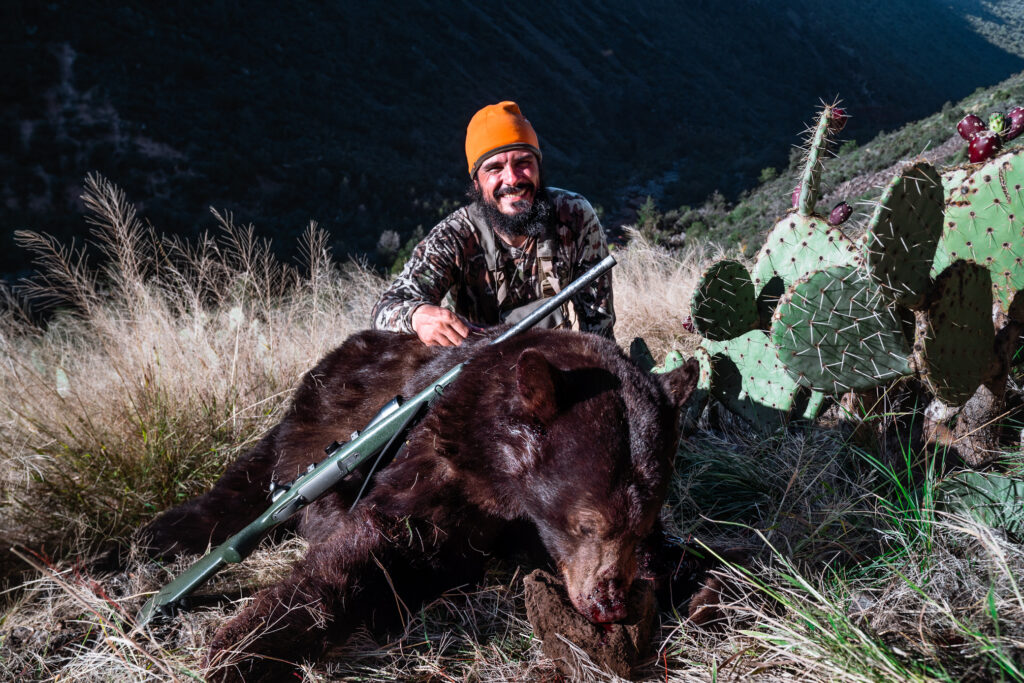
An Arizona October is the perfect month to hunt black bears in my opinion. The bears are on a feeding frenzy to fatten up for the coming winter, which means they have a nice layer of fat on them, unlike in the spring in most cases. It also means they are very active with all of the feeding. Their hides are flawless at this time as well with no rub marks. And the weather. Man, after a long hot summer, the cool temps that Mother Nature starts to lay down are welcomed with open arms. It’s perfect.
Black bear hunting in general just flies under the radar, but breaking it down to October in Arizona does even more so. So, down below I’m going to run through a few key things that have helped me find success on black bears in the copper state during the month of October.
One of the first mistakes I see new bear hunters make in Arizona is they are looking for bears in what I’d deem deer country. It’s too nice. Bears don’t like nice. So, you have to focus on the nasty stuff where most people don’t want to go. They like seclusion and oftentimes I don’t see many deer at all in these rugged pieces of country.
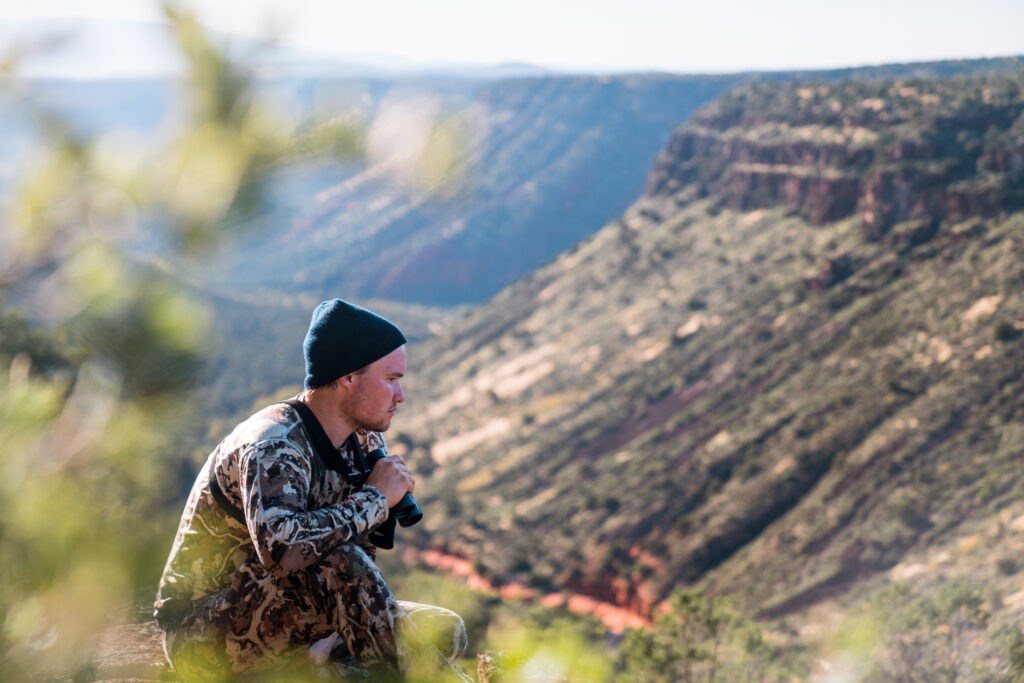
Steep drainages are the biggest terrain feature I look for and more particularly drainages that have secondary drainages or basins feeding into them. These high desert walls do a few things. One, they offer a bear peace and quiet, as not too many humans are spending their days in them. Two, water can often be found down here. Whether it’s a creek or simply a natural pool of water built up from storms and runoff. And three is food. These canyons are usually loaded with food and can be their own little ecosystem where a bear can thrive.
Food is key to finding the bears and I should break that down even further to “the right food is key.” You can research fall bear food in Arizona all you want. I encourage you to do so. However, just because you know it, doesn’t mean you can bank on it. This is where boots-on-the-ground scouting really comes into play. For example, one year a canyon could be loaded with acorns. The next there might be zilch. So, what do you do?
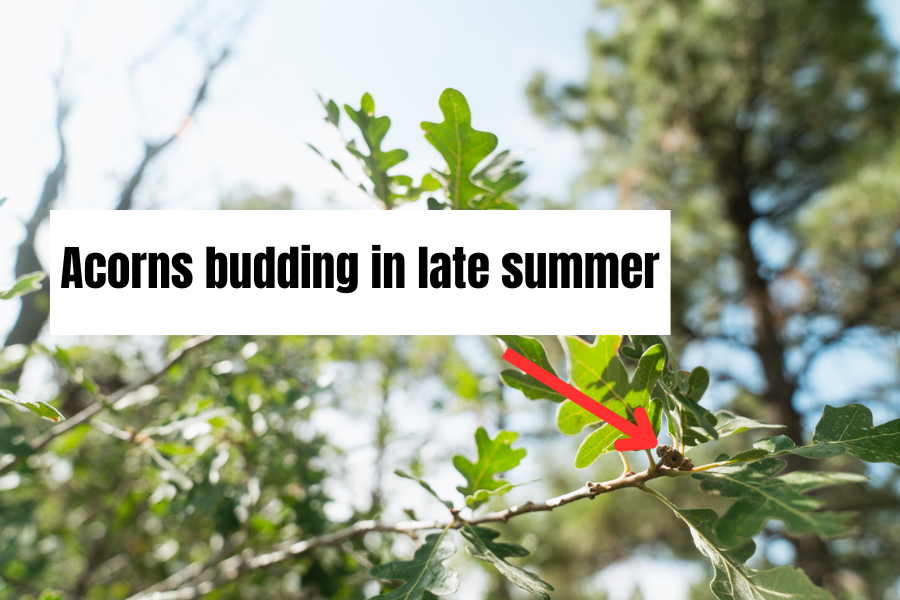
You must proof your food sources. Heading out ahead of the season to check on the growth of popular foods like prickly pear berries or acorns will help narrow your focus. I don’t care how nice an area looks. If there is no food there, there will be no bears. You’ve got to hunt them where they are. Not where you want them to be.
Arizona is far from drowning in bears. There are areas that are very dense in population, but overall, Arizona is said to have around 3,000 bears throughout the state. Because of this, they can be darn hard to find. Many people go out looking for bears but never see one. The term “imaginary Arizona bears” is one I’ve heard more than once.
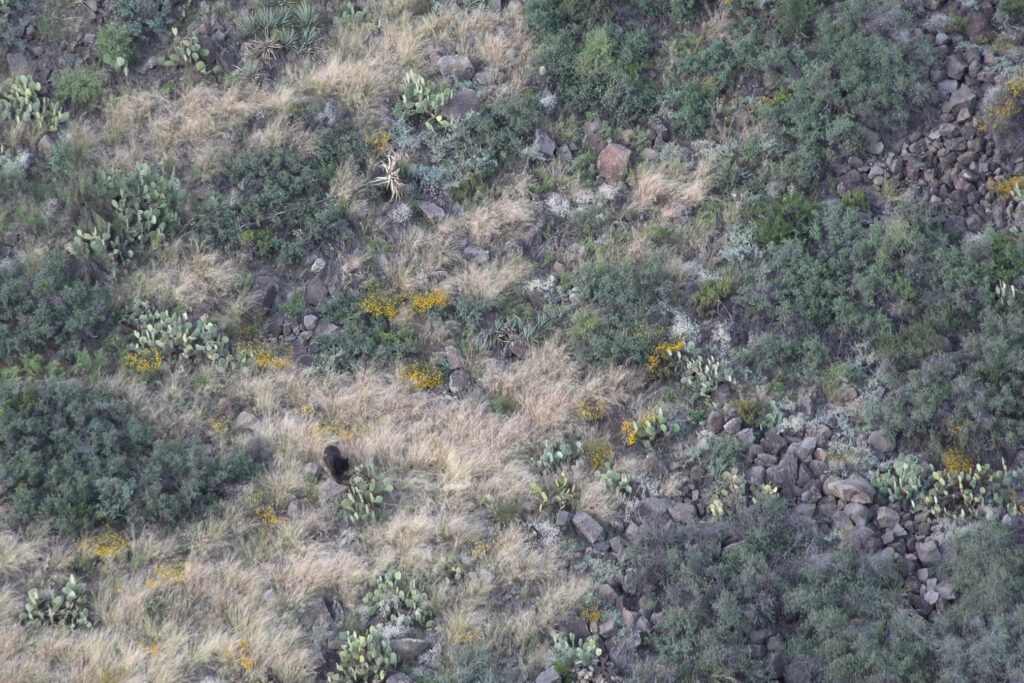
Because of the rather low numbers of bears, seeing them involves an immense amount of patience. Patience is one of the most valuable tools you can have when locating bears in Arizona. Areas need time to work. You can’t show up at a glassing knob, look for 20 minutes, and come to the conclusion that there are no bears there. These animals hide incredibly well and can be right in front of you lying down across a canyon, only to be seen when they get up. If you aren’t there to see that, you’re just not going to see it.
My preferred method for Arizona Fall bear hunting has always been glassing. I like to set up and glass their food, waiting for them to emerge for a snack. In general, I won’t move spots until I have glassed an area for at least an evening and a morning. Bears can be seen in the middle of the day, but I’m not shooting for exceptions here. I’m shooting for numbers and high likelihood. Speaking of shooting…
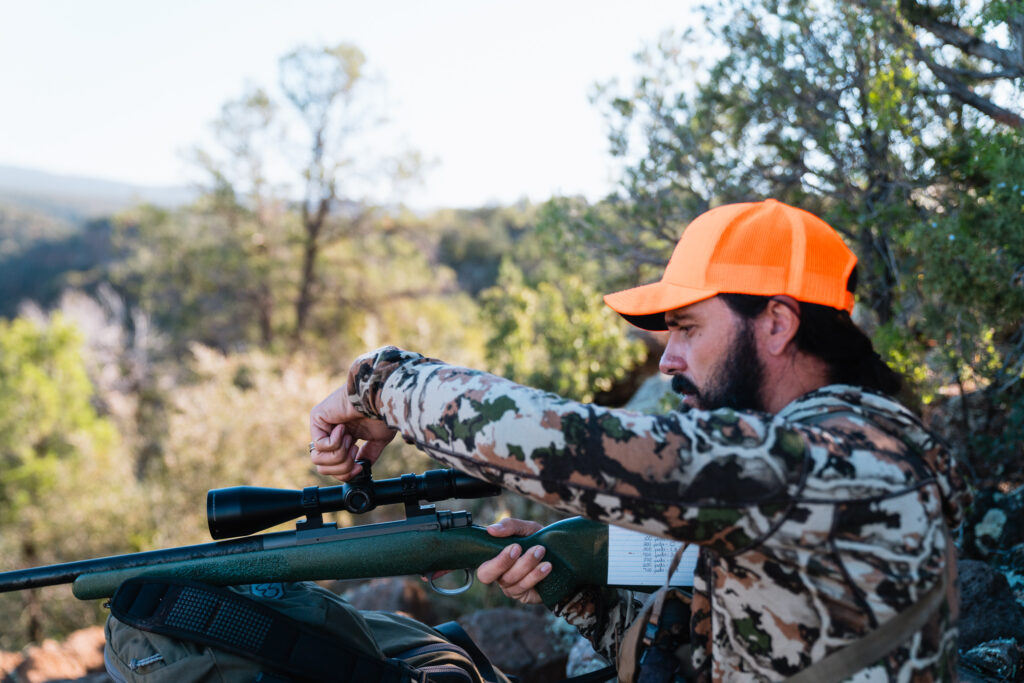
Bears are unfortunately an animal I hear about folks wounding more than any other. I’ve been there and it is never fun. I believe this happens for a few reasons. The hide of a bear soaks up blood pretty dang good and their fat can plug up a wound in a hurry. Less blood on the ground is the result of this. Another is misaiming. Many people aim way too low on a bear, thinking they are going to heart shoot it like they would a deer. They do this not taking into consideration how long the hair is on a bear. The result of that is a low hit. Bears also are notorious for not standing still, so sometimes people will force a shot, the bear moves, and then a bad hit happens. And lastly, bears fire folks up. Bear fever is alive and well.
With all of that said, you really need to try and be sure of your shot. If you hit a bear badly, the chances of finding that bear are slim in the country they call home. Whether it’s a rifle or bow, wait for a broadside or quartering away opportunity. These, from my experience, are going to give you the best chance for a lethal shot and successful recovery. Frontals are fine too, but I wouldn’t try them at a super far distance. And on that note, try to get closer. Attempting to shoot a bear from 800-1000 yards is a great way to wound it.
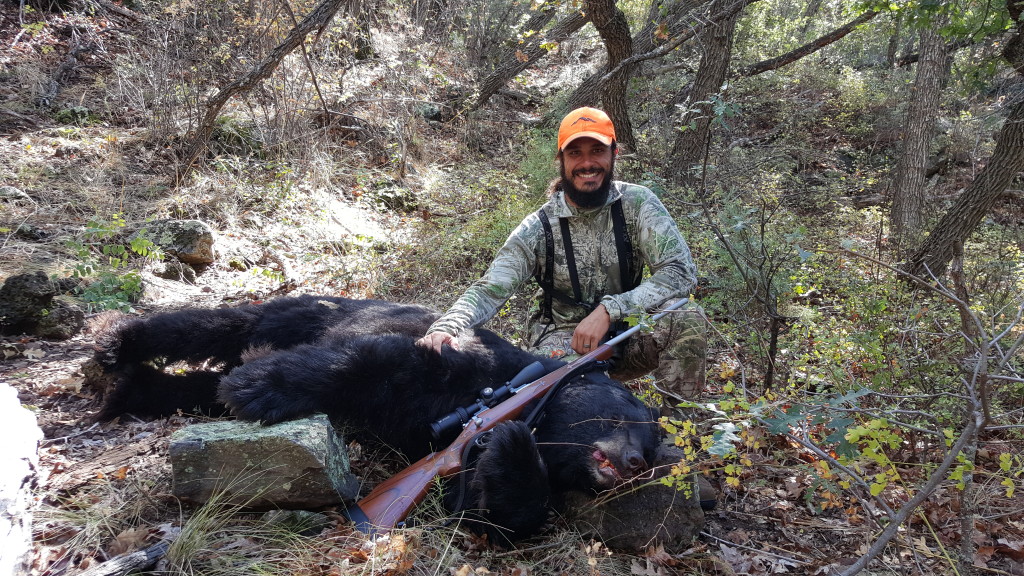
My first successful Arizona Fall bear hunting trip happened during the month of October. It was a big burly jet-black boar that emerged beneath me eating grapes. That whole experience almost 10 years ago planted a seed in me that would eventually turn into strong roots. The things that I have gone over above are not things taken from a book, podcast, or video. They are taken from my real-world experience hunting Arizona black bears in October. Whether you’re looking to do your first bear hunt here or it’s your 20th with no success, applying what I’ve gone over is sure to get you closer to success. From there, it’s on you. Good luck out there this Octo”bear.”
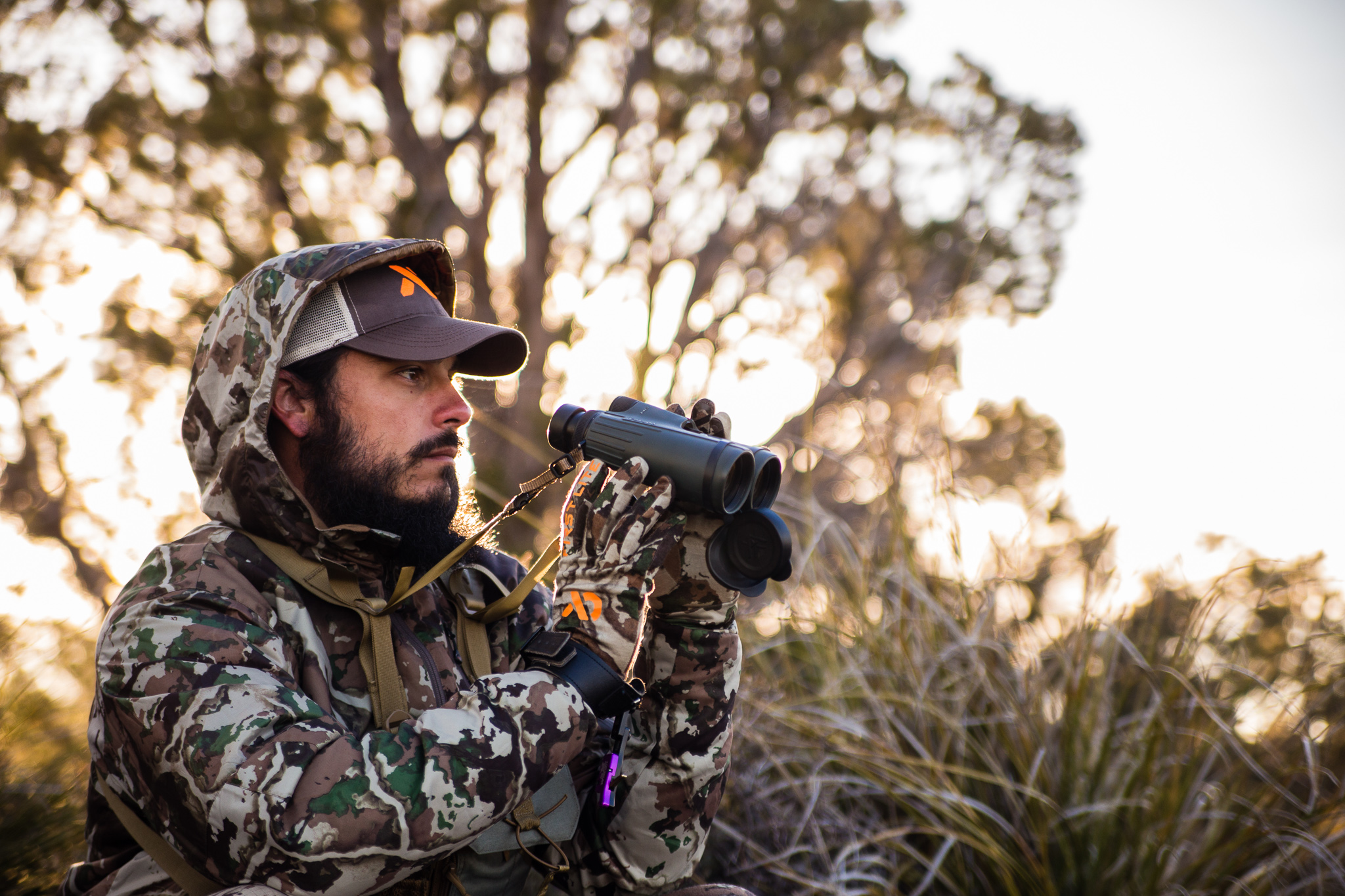

Copyright 2019 Dialed In Hunter
Design by NXNW.